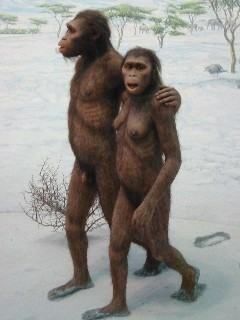bronchi they are structures that originate from the branching of the trachea, which bifurcates and gives rise to the right bronchus and the left bronchus. The bifurcation occurs at the level of the upper edge of the fifth thoracic vertebra.
The primary bronchi, originating from the bifurcation, are located behind the pulmonary vessels, with the left bronchus behind the aorta. The primary bronchi penetrate the lungs and branch into secondary bronchi, tertiary, bronchioles, terminal bronchioles and respiratory bronchioles, which open in the alveolar ducts, alveolar sacs and, finally, in the alveoli, in which exchanges occur. gaseous.

The bronchi ensure that the air is transported to the lungs and that it is warm and clean.
Read more: Respiratory system - responsible for oxygen uptake and carbon dioxide release
What is a bronchus like?
The bronchus is a tubular structure formed by cartilage and muscle tissue.
Cartilages are important to prevent structural collapse and ensure that air flows properly through the airways. The extrapulmonary portion of the bronchi has a structure very similar to that of the trachea, having only smaller diameter.The cartilages that form the bronchi are curved plaques less extensive than the cartilage present in the trachea. Plaques, despite being related to the rigidity of the structure, allow the lungs to expand and contract. Where the plates are not present, the presence of smooth muscle. As the ramifications occur and the bronchi become thinner, there is a reduction in the cartilage, which is completely absent in the bronchioles.
The inner layer of the main bronchi consists ofepithelium ciliated pseudo-stratified cylindrical, with cells goblet, same epithelium found in the trachea. Goblet cells are related to the production of mucus. In the bronchi, there is also the presence of seromucous gland ducts, which open into the lumen of the structure.
US bronchioles, the presence of simple ciliated cylindrical epithelium is observed, and, in the smaller terminal bronchioles, ciliated cubic epithelium, without goblet cells. The amount of cilia decreases in the epithelium as it approaches the respiratory portion.
Do not stop now... There's more after the advertising ;)
THE presence of mucus and eyelashes It is important to ensure that the air is clean, as particles are trapped and the cilia ensure movement of particles towards the trachea. These particles can be expelled in coughing or swallowed. In this region, the air is also heated, due to the presence of blood vessels, and humidified, due to serous secretions.
bronchial tree

the bronchial tree corresponds to the lower airways, being formed by the bronchi, bronchioles, alveolar ducts, alveolar sacs and alveoli. The trachea branches and gives rise to the two main bronchi or primary bronchi. The right bronchus runs towards the right lung and the left bronchus runs towards the left lung. The right bronchus is more frequently invaded by foreign bodies than the left, as it is wider, shorter and more vertical.
After entering the lungs, the main cadabronchus divides into secondary or lobar bronchi. The right bronchus splits into three secondary bronchi, while the left splits into two. The secondary bronchi also branch, giving rise to the tertiary or segmental bronchi.
The tertiary bronchi branch, giving rise to the bronchioles. The bronchioles divide into terminal bronchioles, which divide into respiratory bronchioles. The latter mark the transition to the respiratory part, which consists of alveolar ducts, alveolar sacs and alveoli.
Read too: 10 ways to prevent yourself from colds and flu
Inflamed bronchi

Inflammation of the bronchi is calledbronchitisand can trigger symptoms such as mucus production, shortness of breath and cough. Depending on how long the symptoms remain in the individual, we can classify bronchitis into two groups:
Acute Bronchitis: it improves relatively quickly, having shorter crises than the chronic one. The main causes of this type are infection per virus or bacteria and the action of mechanical or chemical agents such as smoke, dust and gases.
Chronic bronchitis: presents symptoms that affect the individual for a longer time. A case of chronic bronchitis is considered when the symptoms affect the individual on most days, for at least three months a year, in two consecutive years. Its main cause is smoking.
By Vanessa Sardinha dos Santos
Biology teacher
Would you like to reference this text in a school or academic work? Look:
SANTOS, Vanessa Sardinha dos. "Bronchi"; Brazil School. Available in: https://brasilescola.uol.com.br/biologia/bronquios.htm. Accessed on June 28, 2021.

